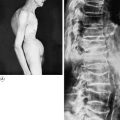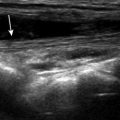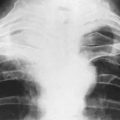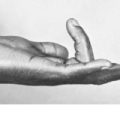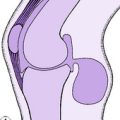1 Clinical methods of history taking and examination
As in other fields of medicine and surgery, diagnosis of orthopaedic disorders depends first upon an accurate determination of all the abnormal features from:
Secondly, it depends upon a correct interpretation of the findings.
CLINICAL EXAMINATION
The examination of the part complained of does not complete the clinical examination. It sometimes happens that symptoms felt in one part have their origin in another. For example, pain in the leg is often caused by a lesion in the spine, and pain in the knee may have its origin in the hip. The possibility of a distant lesion must therefore be considered and an examination made of any region under suspicion.
Thus the clinical examination may be considered under three headings:
1 EXAMINATION OF THE PART COMPLAINED OF
Inspection
Inspection should be carried out systematically, with attention to the following four points:
Palpation
Again there are four points to consider:
Estimation of fixed deformity
Fixed deformity exists when a joint cannot be placed in the neutral (anatomical) position. Its causes are described on page 56. The degree of fixed deformity at a joint is determined by bringing the joint as near as it will come to the neutral position and then measuring the angle by which it falls short.
Valgus and varus. Explanation is needed of the commonly used terms valgus and varus, which are often confusing to students. In valgus deformity the distal part of a member is deviated laterally (outwards) in relation to the proximal part. Thus, for example, in hallux valgus the toe is deviated outwards in relation to the foot; and in genu valgum the lower leg is deviated outwards in relation to the thigh. Varus deformity is the opposite: the distal part of a member is deviated medially (inwards) in relation to the proximal part (examples – cubitus varus and genu varum).
Movements
In the examination of joint movements information must be obtained on the following points:
Sensation
Patients often complain of ‘numbness’ or tingling, and it is important to test sensibility both to light touch and to pin prick throughout the whole of the affected area. In unilateral affections the opposite side should be similarly tested for comparison. The precise area of any blunting or loss of sensibility should be carefully mapped out, and from a knowledge of the sensory dermatomes and the cutaneous distribution of the peripheral nerves the particular nerve or nerves affected may be identified and the root value established.
Peripheral circulation
Symptoms in a limb may be associated with impairment of the arterial circulation. Time should therefore be spent in assessing the state of the circulation by examination of the colour and temperature of the skin, the texture of the skin and nails, and the arterial pulses; and by such special investigations as may be necessary. This examination is particularly important in the case of the lower limb. Further details are given on page 420.
Tests of function
It is necessary next to test the function of the part under examination. How much does the disorder affect the part in its fulfilment of everyday activities? Methods of determining this vary according to the part affected. To take the lower limb as an example, the best test of function is to observe the patient standing, walking, running and jumping, or climbing and descending stairs. Special tests are required to investigate certain functions – for example, the Trendelenburg test for abductor efficiency at the hip (p. 340).
3 GENERAL EXAMINATION OF THE BODY AS A WHOLE
The mistake is sometimes made of confining the attention to the patient’s immediate symptoms and failing to assess the patient as a whole. It should be made a rule in every case, however trivial it may seem, to form an opinion not only of the patient’s general physical condition but also of his psychological outlook. In simple and straightforward cases this general survey may legitimately be brief and rapid, but it should never be omitted.


